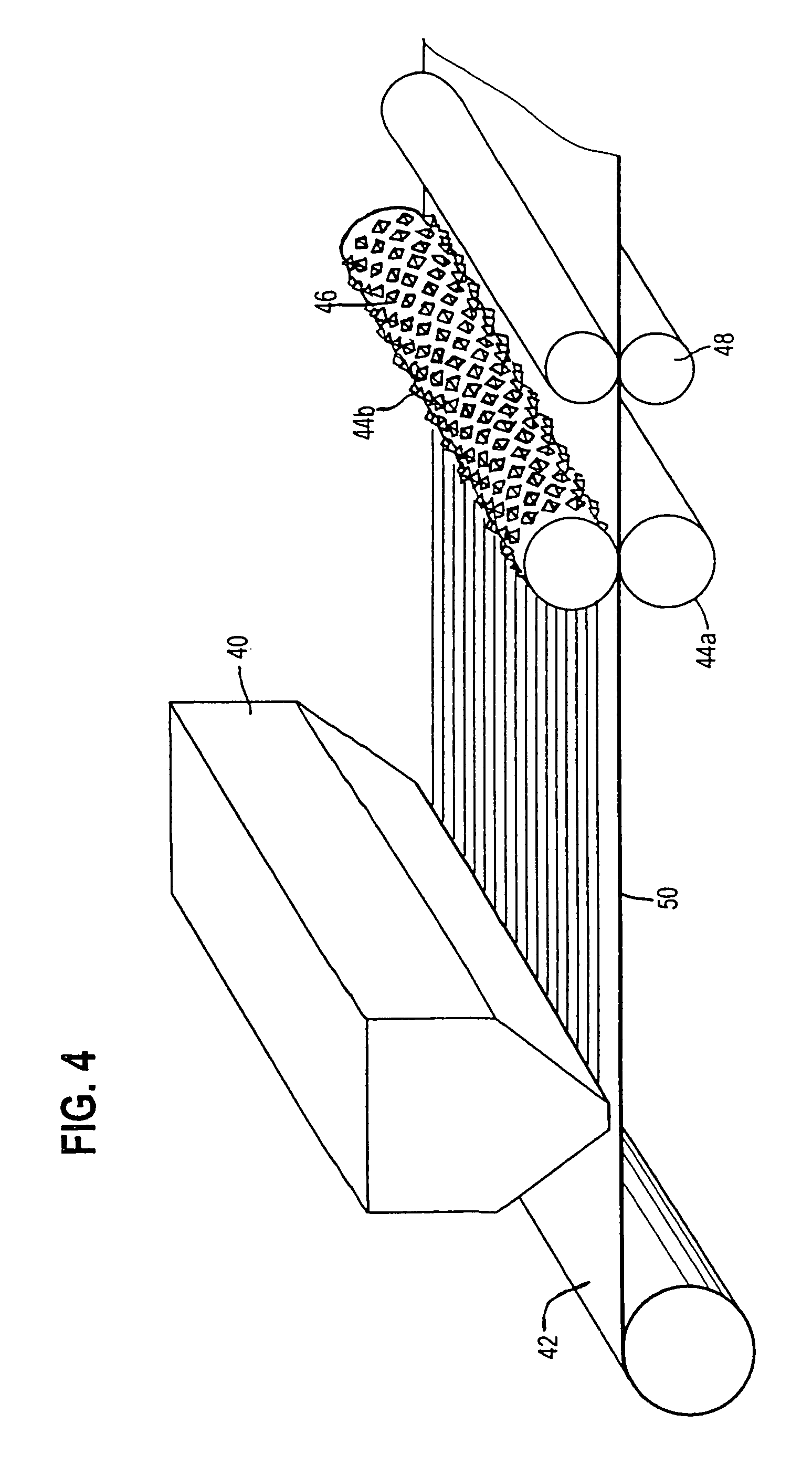Processing substrate and method of manufacturing same
a technology of processing substrate and manufacturing method, which is applied in the field of protective media, can solve the problems of slipping of absorbent materials, difficult, if not impossible, cleaning and/or sterilizing of surfaces, and all foods present some degree of risk, and achieve the effect of preventing slippage of absorbent materials
- Summary
- Abstract
- Description
- Claims
- Application Information
AI Technical Summary
Benefits of technology
Problems solved by technology
Method used
Image
Examples
Embodiment Construction
[0052]Referring now to FIG. 1A, a processing substrate and / or support surface that may be used as a food preparation surface or sheet 10 preferably is planar (i.e., flat) in shape. Alternatively, as seen in FIGS. 1B and 2, the sheet 10 may be tray-shaped and includes a substantially planar central portion or base 12 and inclined or curved side surfaces 14a–14d, wherein the base 12 and side surfaces 14 together define a generally concave structure. The side surfaces 14 may be formed by folding and / or scoring the sheet 10 at corner portions 15a–15d and optionally folding or scoring the sheet 10 at portions 13a–13d intermediate the base 12 and side surfaces 14. The inclined or curved side surfaces 14 could alternatively be formed by any other process, such as forming through the application of heat, vacuum forming, vacuum pressure forming, or the like. If desired, fewer than four inclined side surfaces 14 may be provided. For example, only the inclined side surfaces 14a–14c may be empl...
PUM
| Property | Measurement | Unit |
|---|---|---|
| thickness | aaaaa | aaaaa |
| thickness | aaaaa | aaaaa |
| thickness | aaaaa | aaaaa |
Abstract
Description
Claims
Application Information
 Login to View More
Login to View More - R&D
- Intellectual Property
- Life Sciences
- Materials
- Tech Scout
- Unparalleled Data Quality
- Higher Quality Content
- 60% Fewer Hallucinations
Browse by: Latest US Patents, China's latest patents, Technical Efficacy Thesaurus, Application Domain, Technology Topic, Popular Technical Reports.
© 2025 PatSnap. All rights reserved.Legal|Privacy policy|Modern Slavery Act Transparency Statement|Sitemap|About US| Contact US: help@patsnap.com



